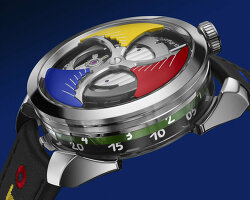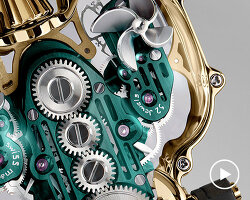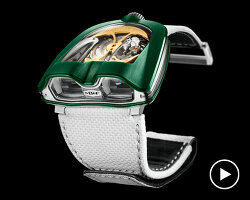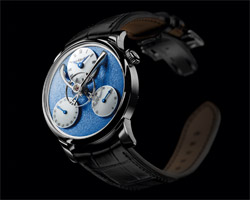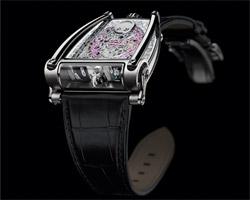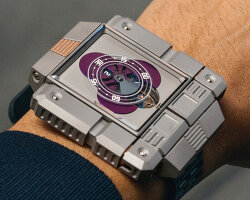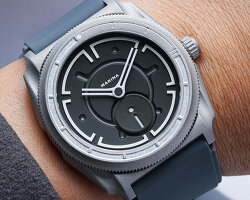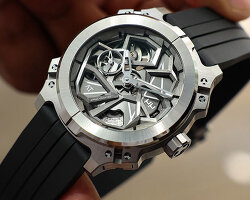MB&F’s HM11 architect is also inspired by Le Corbusier’s quote
‘What if that house was a watch?’ Maximilian Büsser, founder of MB&F, asked when he perused the experimental phase of architecture in the late 1960s. He closed this chapter and read Le Corbusier’s statement: ‘une maison est une machine à habiter’ (‘a house is a machine to live in’). In an attempt to combine horology and architecture in a single timepiece, MB&F unveils Nº11 Architect, a homage to the spurt of experimental architecture, a watch inspired by Le Corbusier’s quote, and a wrist accessory that sculpts mini houses around it similar to four corners of a house, each with distinctive purpose.
Architecture emerges as the core of MB&F’s HM11 Architect watch. A central flying tourbillon forms the heart of this house, pushing skyward under a double-domed sapphire roof. Its components are held up by an upper bridge, molded like a four-leaf clover. Its shape resembles windows found in temples and could also be compared to the moment when a fertilized egg is dividing into cells, symbolizing genesis. Four identical parts extend outward from the center of this bridge, which forms the four rooms of the watch’s house, making MB&F’s HM11 Architect watch recall the nuances of a crossroad or a crucifix.

images by MB&F (unless stated)
Exploring the four rooms around the movable watch
Maximilian Büsser and the design team at MB&F made the HM11 Architect watch movable so the wearer can rotate the entire timepiece structure and peek inside each of the four rooms. These micro-dwellings are also positioned a 90-degree angle to the others so the wearer can still see the other rooms no matter what position they put the watch in. Turning the watch clockwise by 45 degrees at a time produces a tactile click and provides 72 minutes of power to the watch. After 10 complete rotations, the watch has a maximum power reserve of 96 hours.
One of these rooms tells the time. Rod-mounted orbs show the hours and minutes; larger, lighter ones for each quarter-hour, and smaller, darker ones for the rest. These rod-mounted orbs serve as markers for the hours, and the color and size of these orbs help the wearer quickly see what time it is. Red-tipped arrows also point to the exact hours and minutes to add a touch of color.
The rod-mounted orbs also show up in the next room and indicate the remaining power in the watch, still with a red-tipped arrow pointing toward them. These orbs start small and increase in size as the wearer goes clockwise, with the largest orb, which is 2.4mm in diameter, telling that the watch has a full power reserve of 96 hours.

each mini room around MB&F’s HM11 Architect timepiece has its own purpose
Every room in the house can experience changes in its temperature. To keep track of the shifting warmth or cold, MB&F’s HM11 Architect watch places a thermometer in the third room of the timepiece. Unlike the digital thermometers used these days, the instrument inside MB&F’s timepiece turns to a traditional temperature-reading tool as the tiny strip inside the watch bends mechanically when the temperature changes. The temperature feature doesn’t need any extra power and works on its own without needing batteries or electricity. The wearer can also choose if they want the temperature in Celsius or Fahrenheit.
Going to the last room, the wearer might be taken aback by the way it appears empty; just a white space. But a minuscule emblem of MB&F sits in there alone. It isn’t there just for aesthetics; its function allows the wearer to set the time, like a traveler who found a key to the hidden door. When they pull on the transparent part of this room, which serves as the handle, it clicks open. And when they turn this door as if they were turning a key in the hole, they can set the time of MB&F’s HM11 Architect watch.

detailed view of the MB&F HM11 Architect watch | wrist photos by Eric Rossier
cool ozone blue or a warm solar gold for MB&F’s watch
The rooms around MB&F’s HM11 Architect watch are surrounded by walls forged in polished grade-5 titanium. In the middle of this watch-house, there’s an open space, like a courtyard in a house, covered with a see-through roof made of double-arched sapphire crystal. The parts of the flying tourbillon, plates, and bridges are colored using a process called physical vapor deposition, which enables the timepiece to embody the shades of cool ozone blue or warm solar gold (there are only 25 watches for each color).
The use of titanium and sapphire crystal for MB&F’s N11 Architect timepiece is often highlighted since these may not be easy to work with and were not commonly used in watches in the previous decades. For MB&F, shaping these materials may recall carving a detailed sculpture out of hard stone. As MB&F says, it takes almost a week to complete all the steps, including cutting, finishing, and checking to guarantee precision in watchmaking. As of publishing the story, the MB&F’s N11 Architect watch is priced at 213,000 CHF (or around 239,000 USD).
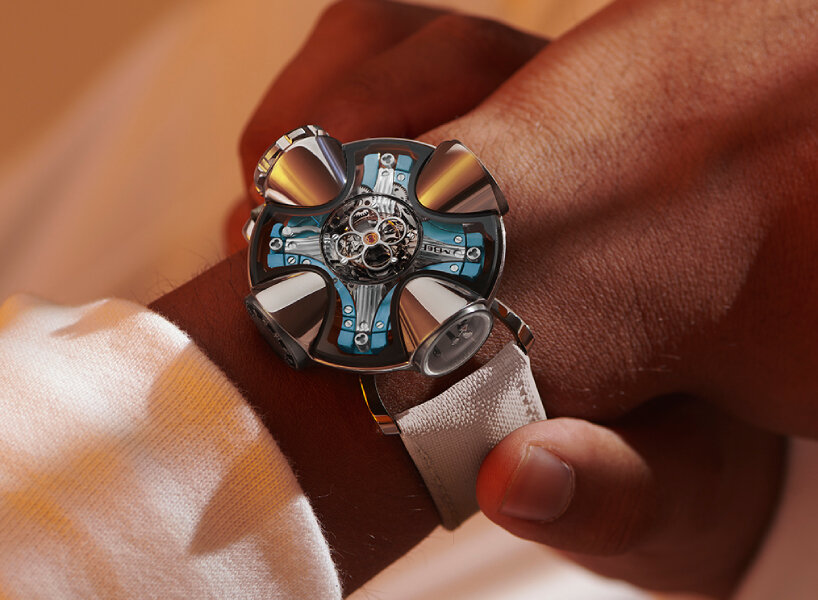
in the middle of this watch-house, the see-through roof is made of double-arched sapphire crystal
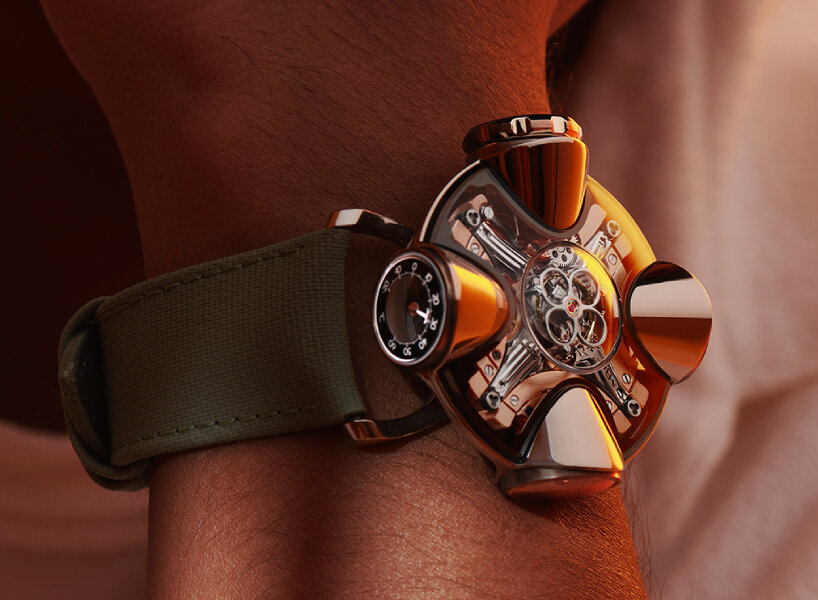
the parts of the flying tourbillon, plates, and bridges are colored using a process called physical vapor deposition

MB&F’s HM11 Architect timepiece

the watch embodies the shades of cool ozone blue or a warm solar gold | workshop photos by Fabien Nissels
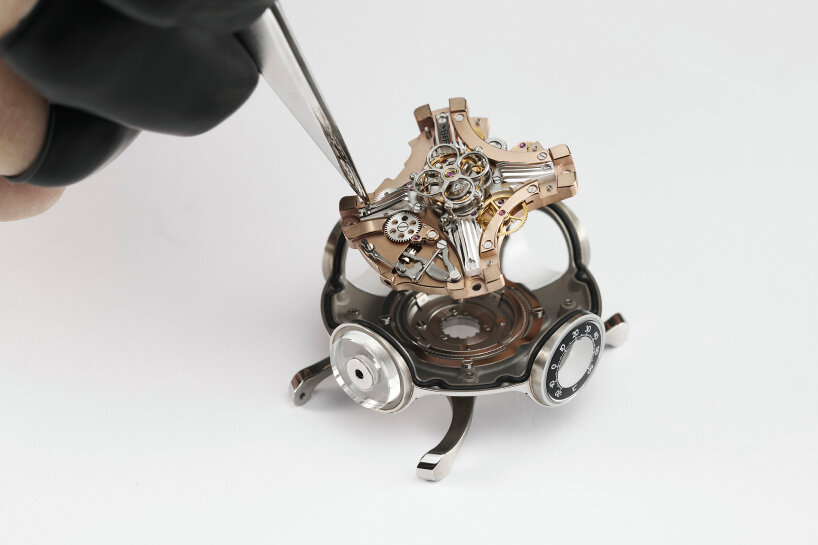
the rooms around MB&F’s HM11 Architect watch are surrounded by walls forged in polished grade-5 titanium
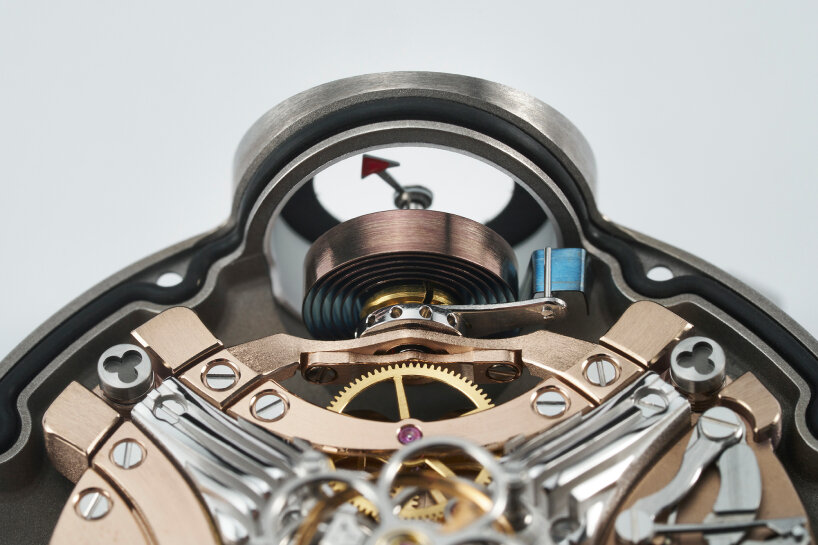
detailed view of the timepiece

MB&F’s HM11 Architect watch
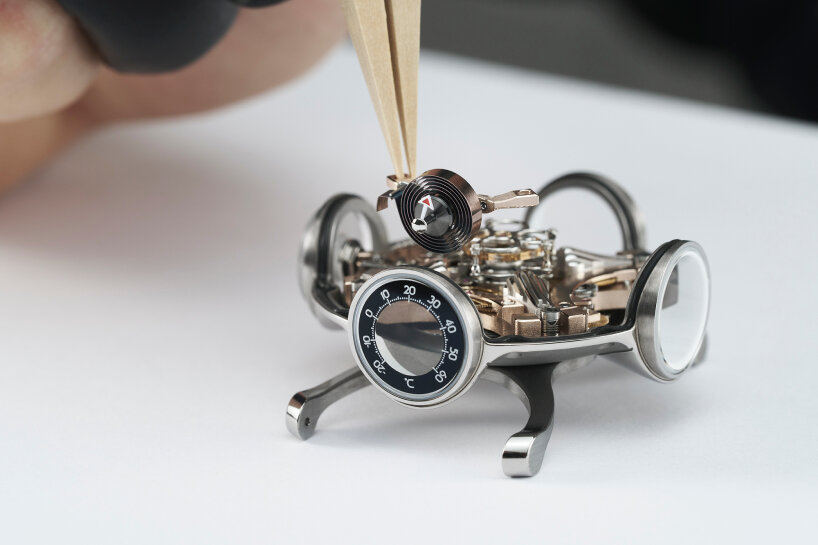
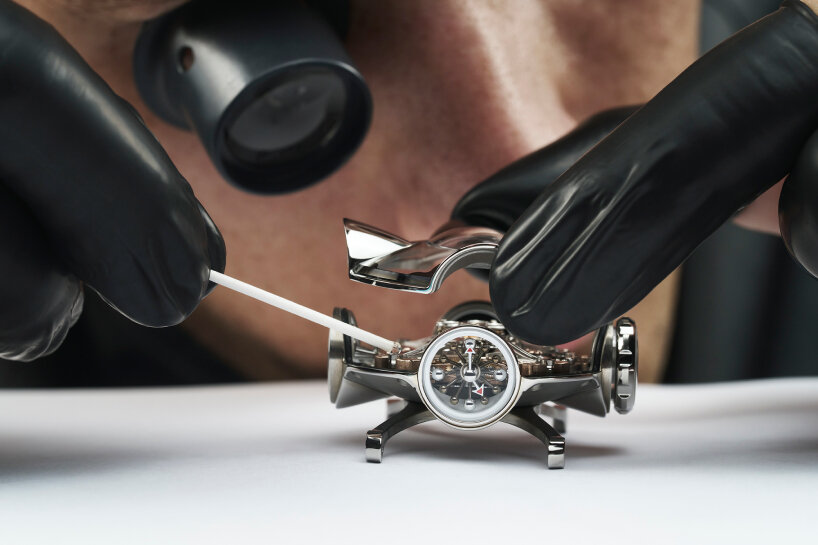
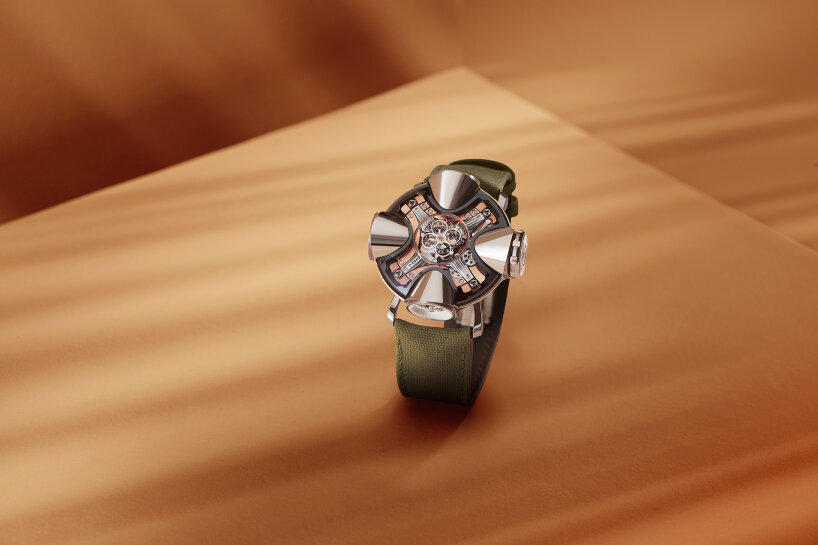
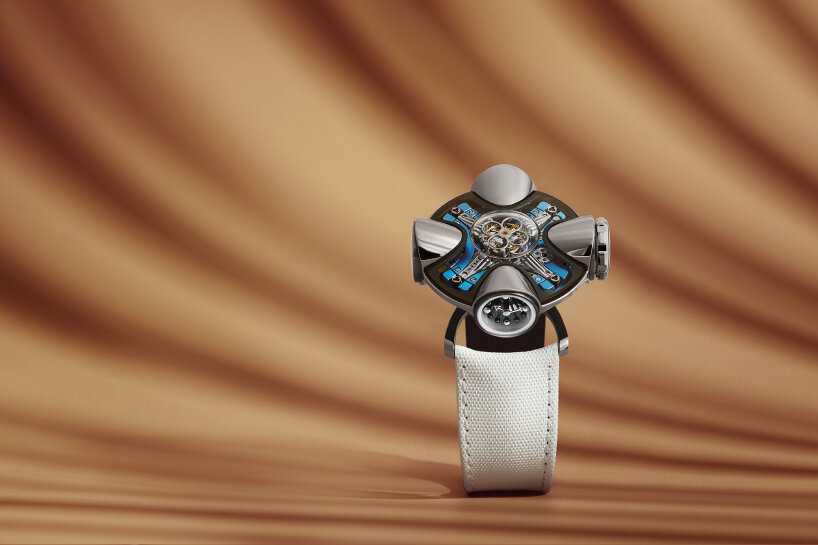
project info:
name: HM11 Architect
brand: MB&F

